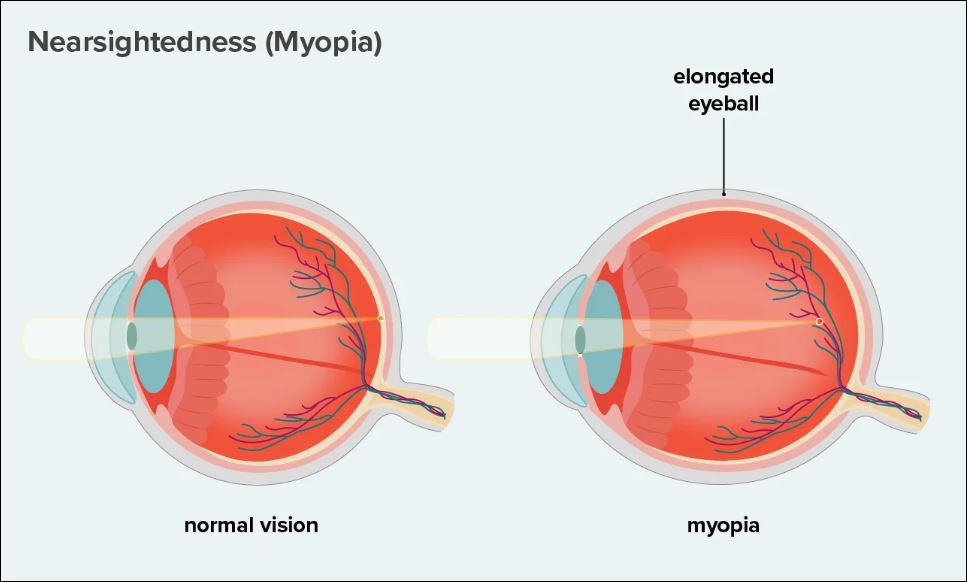Nearsightedness, also known as myopia, is a common eye condition that affects about 30% of the global population. It is a refractive error in which light entering the eye is focused in front of the retina, rather than on it. This results in blurred vision when looking at distant objects, while close objects remain clear. Nearsightedness occurs when the eyeball is too long or the cornea (the clear front part of the eye) is too curved, causing light to bend too much and focus in front of the retina.
Nearsightedness usually develops during childhood or adolescence, and can progress until the age of 20. Genetics plays a significant role in nearsightedness, and children with nearsighted parents are more likely to develop the condition. Spending too much time focusing on close-up tasks, such as reading, writing or using electronic devices, can also increase the risk of developing nearsightedness.
The most common symptom of nearsightedness is blurry distance vision, while close-up vision remains clear. Other symptoms can include eyestrain, headaches, and difficulty seeing while driving, especially at night. Nearsightedness can be diagnosed through a comprehensive eye exam, which includes a visual acuity test, a refraction test, and an examination of the inside of the eye.
Nearsightedness can be corrected with eyeglasses, contact lenses, or refractive surgery. Eyeglasses and contact lenses work by bending light in a way that compensates for the refractive error. Refractive surgery, such as LASIK, reshapes the cornea to correct the refractive error. While nearsightedness is a common condition, it can be easily corrected with the right treatment, allowing those affected to see clearly and enjoy daily activities without discomfort or inconvenience.
